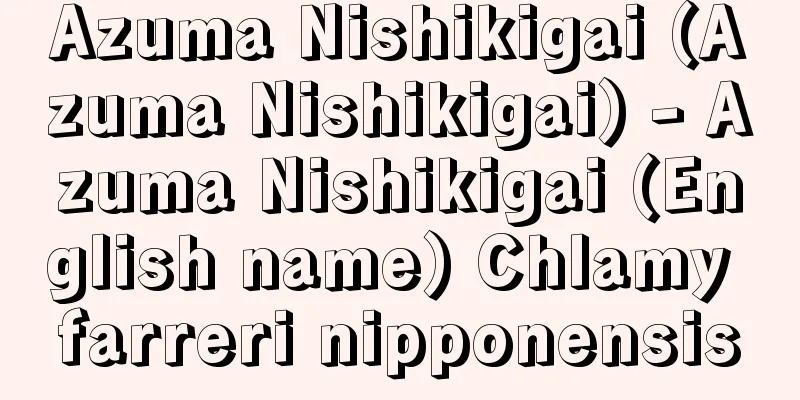Nanpo-roku

|
This book on tea is said to be the secret manual of Rikyu-style tea ceremony. It was handed down until recently under the name "Nanbo-roku" because it was written down by the second head priest of Shuun-an, a sub-temple of Nanshu-ji Temple in Sakai, Nanbo Soukei, who was said to be a disciple of Rikyu, based on his oral histories of Rikyu's tea ceremony. However, since the handwritten copy by Tachibana Jitsuzan, a retainer of the Kuroda clan of the Fukuoka domain, which is currently considered to be the basis for the circulating version, is called "Nanbo-roku," it can be said that it has been established to use the name as it is. The book is made up of seven volumes: Volume 1 "Memorandum," Volume 2 "Meeting," Volume 3 "Shelf," Volume 4 "Study," Volume 5 "Table," Volume 6 "Ink Drawing," and Volume 7 "After the Demise." Saneyama describes the circumstances of the discovery of this book in the colophon of "Metsugo" and in his book "Kirobengi". According to this, in the autumn of 1686 (the third year of the Jōkyō era), while on his way to Edo to attend the service of the feudal lord Kuroda Mitsuyuki, he received a letter from Kyoto stating that he possessed Rikyu's secret tea book and would send copies if necessary. He requested the letter, and the first five volumes arrived at the Edo residence at the end of the year. Later, during his visit to Edo in 1690 (the third year of the Genroku era), he heard that Naya Sosetsu, a descendant of Nanbō, also possessed two volumes of Rikyu's secret tea book, and he copied "Sumibiki" and "Metsugo". However, considering the strangeness of the discovery being made on the 100th anniversary of Rikyu's death and the circumstances of the tea ceremony in the Fukuoka domain, there is also a theory that the book was a forgery by Saneyama, and it will be clarified by further research. [Kouichi Tsutsui] "Nanpo-roku" (edited by Matsunosuke Nishiyama) (Iwanami Bunko) Source: Shogakukan Encyclopedia Nipponica About Encyclopedia Nipponica Information | Legend |
|
利休流茶法の秘伝書と称される茶の本。利休高弟を称する堺(さかい)の南宗寺(なんしゅうじ)の塔頭(たっちゅう)集雲庵(しゅううんあん)第2世南坊宗啓(そうけい)が利休茶法を聞き書きしたものであるということから、最近まで『南坊(なんぼう)録』の名で伝承されてきたが、現在流布本の底本とされる福岡藩黒田氏家老立花実山(たちばなじつざん)の自筆本が『南方録』となっているため、表記のとおりとすることで定着したといえよう。全体の構成は、巻一「覚書」、巻二「会」、巻三「棚」、巻四「書院」、巻五「台子(だいす)」、巻六「墨引」、巻七「滅後」の七巻からなる。実山は本書発掘の経緯を「滅後」の奥書と、その著『岐路弁疑(きろべんぎ)』で述べている。それによると、1686年(貞享3)の秋、藩主黒田光之に従って江戸へ参勤する途次、京都からの書状で、利休秘伝の茶書を所持しているが必要ならば写して送るとのことであったため依頼しておいたところ、年末に江戸藩邸に最初の五巻が届いた。その後1690年(元禄3)の江戸参勤のおり、南坊の子孫という納屋宗雪(なやそうせつ)が同じく利休秘伝書二巻を所持していることを聞いて書写したのが「墨引」と「滅後」であるという。しかし、その発見が利休百年忌にあたることの不自然さ、福岡藩内における茶道事情とから考え合わせて、実山による偽書説などもあり、今後の研究をまって解明されることであろう。 [筒井紘一] 『西山松之助校注『南方録』(岩波文庫)』 出典 小学館 日本大百科全書(ニッポニカ)日本大百科全書(ニッポニカ)について 情報 | 凡例 |
Recommend
UP - United Press Association
An American news agency founded in 1907 by E. W. S...
Floor number - floor
〘noun〙① The number of floors of a building. ※Asaku...
Manouēl Chrysolōras (English spelling)
Around 1350 - 1415 A Byzantine man of letters. He ...
Sodium citrate
...For example, copper citrate Cu 2 (C 6 H 4 O 7 ...
Mount Myogi
A famous mountain in western Gunma Prefecture. To...
Cochran, George
Year of death: 1901.5.24(1901.5.24) Born: January ...
Moog, R. (English spelling) MoogR
...The name "music synthesizer" was fir...
Common mistletoe
…Some species have red fruits that ripen and are ...
Ikeda Post Town
A post station in the province of Totomi from the ...
Foreign mail - Gaikoku yūbin
〘 noun 〙 Mail exchanged between foreign countries....
Hauer, JM
…In contrast to traditional tonal music, which co...
Orofure Pass - Orofure Pass
A pass on the border between Noboribetsu City and ...
Shitennoji Temple
The head temple of the Japanese sect, located in S...
Chelate Complex - Chelate Complex
A ligand that can bind to one metal atom simultan...
New Left - Shinsayo
Also known as the New Left. A worldwide movement t...









